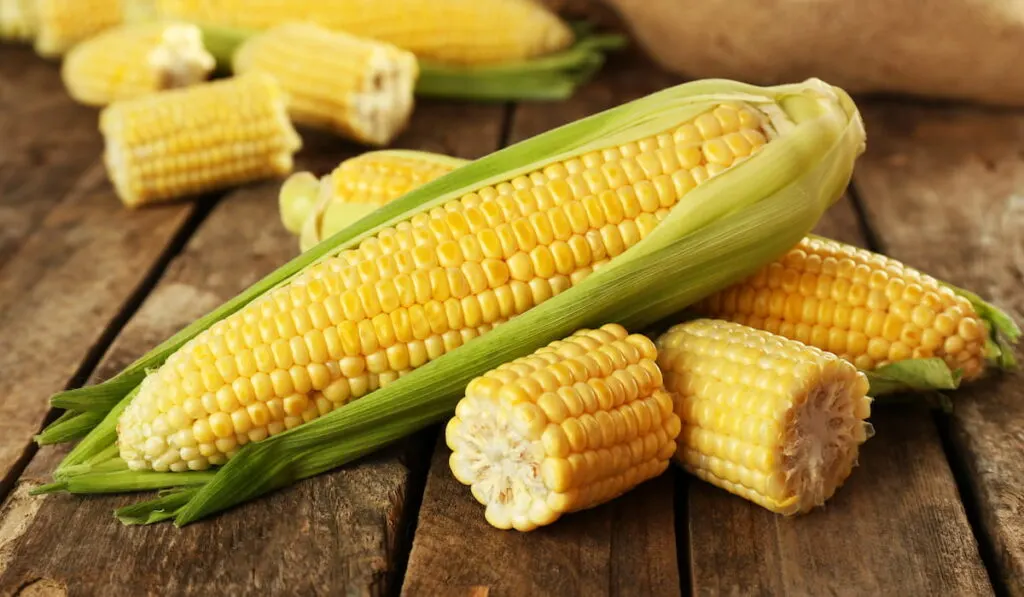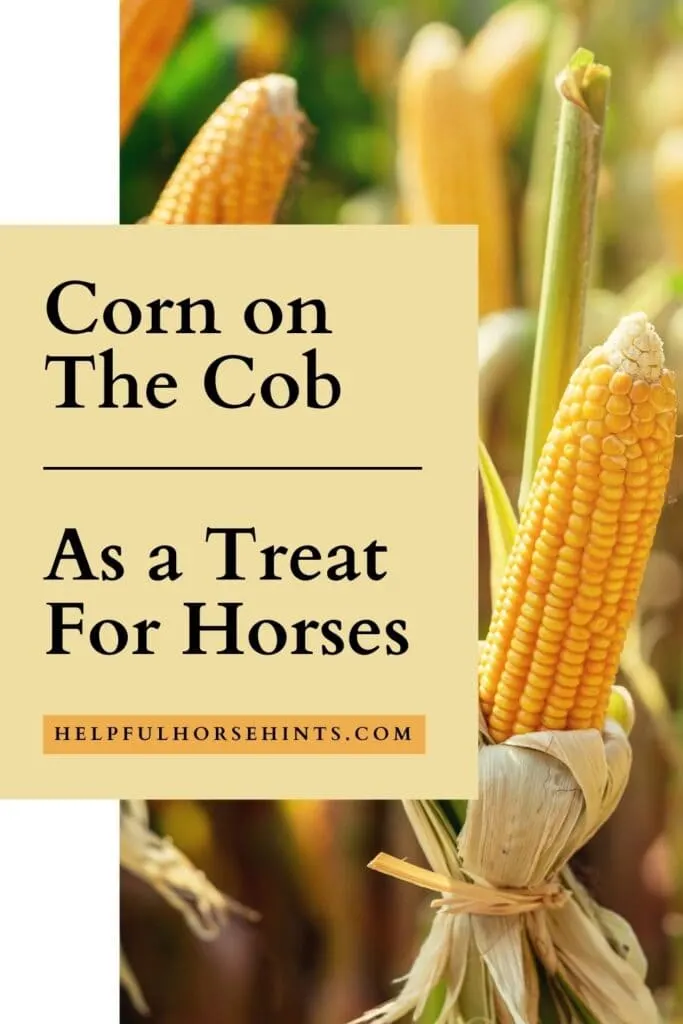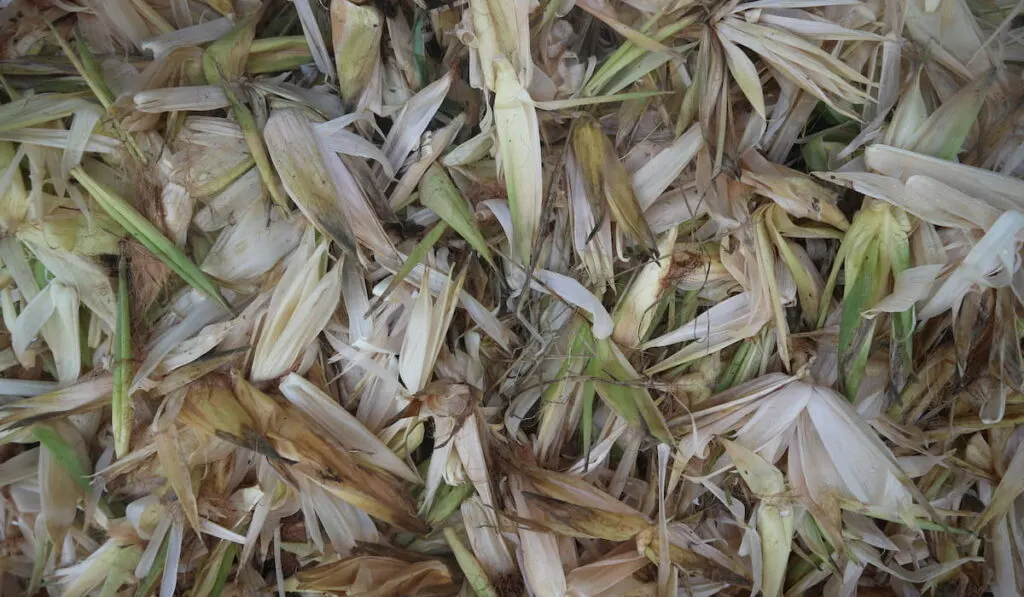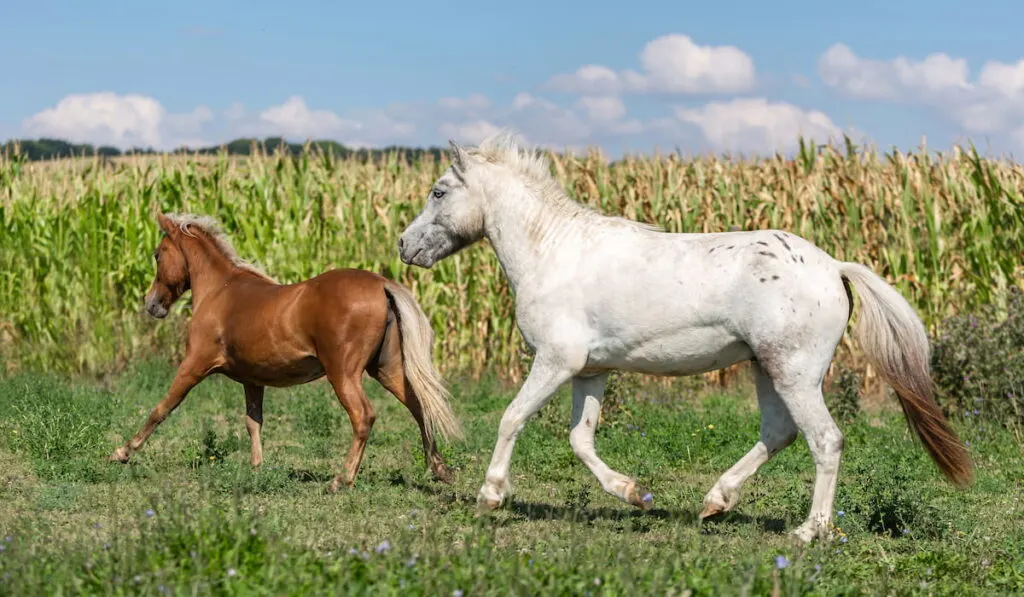One of the classic summers treat for us is undoubtedly some sweet, fresh corn on the cob. And just like when you crunch into an apple and you get the urge to give your horsie friend a bite, you may find yourself wanting to share some delicious corn on the cob, too. But, as with any new foodstuff, you may stop and ask yourself:
Can horses eat corn on the cob?
The answer to that is actually a bit multi-pronged. Corn itself is not poisonous or toxic to horses, but it does carry some risks. Proper preparation should be followed and corn should not be overfed to horses.

Also, corn kernels can affect a horse’s digestive system differently, depending on the preparation. The same is true for cob itself, the husk or stalks, and so each part should be looked at separately. Overall, while relatively safe in small doses, corn should be prepared correctly and rationed out.
Table of Contents
Corn Basics
Corn is prevalent across almost all states in America and is, in fact, a commonly found ingredient in many livestock feeds.
Corn does not contain much protein, nor does it have a number of essential amino acids – however, it does have a claim to fame as being the only grain to contain high amounts of carotene, which horses use to produce Vitamin A (which is important for eyesight and tissue building.)
And, though lower in fiber and higher in starch than other grains such as oats, corn is a high energy food with a high volume weight. Roughly speaking, this means horses can get twice as much energy per volume from corn as they can from the same amount of oats.
However, since the starch is lower in corn than in oats, that means corn is not as easily digested. Because of this, the diet can run the risk of grain overload – which is why portion control of corn is so important.
Corn oil is actually something that can be added to a horse’s grain in order to increase the fat content. This is usually a practice used ahead of winter months (for needed fat storage) or when a horse’s exercise schedule is ramped up (to replenish calories).
Corn Kernels
As long as a horse’s teeth are in good condition and disease-free (especially the molars), horses should have no trouble at all in chomping through the tough outer coatings of kernels, though there are varying degrees of success there. Further, corn kernels can be prepared in several ways, though not all are recommended for horses.
- Whole kernels, shelled: Aka unprocessed and unaltered kernels. Because they are not split, they will most likely pass through the horse’s system undigested for the most part. In this form, the corn is not only a nutrition waste but can present potential digestive issues if eaten in too great a quantity.
- Cracked kernels: Corn kernels that have been cracked are smaller in size than whole ones. Plus, the cracking means the digestive juices are able to tackle that kernel, meaning your horse will digest more of it.
- Steamed and rolled kernels: These are kernels that have been subjected to moisture and then flattened down. This action processes the kernel even further, meaning there is even more chance for juices in the digestive system to properly break a kernel down and have the horse digest it.
- Steam flaked kernels: Similar to steamed and rolled kernels, this time the corn is also heated to break it down even further.
- Ground kernels or crushed kernels: Here the processing is a step too far for horses. The corn is ground down to very fine particles – too fine for safe equine digestion. These particles could now too quickly pass through the small intestines, which can lead to a whole host of other digestive issues, eventually resulting in the dreaded colic.
Corn as a grain, though, is an excellent energy source, as grains without a hull tend to be more energy-dense.

It is about 71% starch, 4% fat and 8% protein. Corn kernels are also quite low in calcium.
Because of its high starch and carb content, corn breaks down in the horse’s body to produce glucose (a.k.a. sugar), which has given corn kernels a reputation of being a food that makes horses hot and hyper.
This is similar to a kid who has eaten a lot of sugar and experiences that sugar high – the horse, too, will get quite hyper and energetic, but will also use up that energy quickly and crash.
Corn Cob
The cob is what can boost the fiber content of corn. It’s kernels only contain around 2% makeup of fiber, but the cob increases that number significantly.
Horses tend to enjoy cobs for chewing after they finish eating the kernels. Cobs should not, however, be introduced as the main food source or a regular part of the diet.
Whole ears of corn, cobs included, can be fed to horses since cobs are high in fiber – but they are low in energy. Some horse owners use cobs as tools to try and slow down horses who gulp down their grain too fast.
Corn Stalk
Corn stalks are often used as part of horse bedding. And, while not primarily used as a food source, the same careful consideration should be given as the kernels, because stalks are just as susceptible to that same toxic fungus.
Corn Husk

Similar to all the other parts of the corn, those toxins can possibly grow on husks, too. If any sign of fungus or mold can be seen, do not feed it to your horse.
Outside of that, there is little nutritious value for horse’s found in the husk, but little else of concern, either. While horses shouldn’t be chowing down on corn husks as a regular part of their diet, a chomp or two here and there, provided there is no fungus, should not do them any harm.
When I do barbeque fresh corn, I’ll often feed my own horses and burros the husk as a great. Each horse or burro gets no more than 2 – 3 leaves or pieces of the husk.
Some horses enjoy corn husks more than others. My Quarter Horse mare devours it and some of the burros won’t touch it.
Potential Dangers of Feeding Corn to Horses
It is always advised against feeding horses corn that is straight from the field, as the potential for it to be infected with particular toxins is way too high for comfort.
These toxins including fumonisin, which infects corn kernels before harvest and is produced by a strain of fungus. When horses ingest enough of this toxin, it can result in a neurological condition called equine leukoencephalomalacia (ELEM), also known by many as moldy corn disease.
This disease breaks down the white matter in the brain, which can then result in problems with coordination, blindness, and even death.
Fumonisin infestations are subject to environmental changes and factors. For instance, growing seasons that occur in a warm, humid climate have an increased risk of contamination. Further, the toxin is not something that is always caught just by looking at it and it does not alter the corn’s taste, so horses will willingly and unknowingly eat it.

The increased carbohydrates and sugars can cause behavior issues, too, in the form of hyperactivity. And, for older horses, corn is more of a concern due to missing or less than perfect teeth.
Senior horses may struggle to properly break down corn, causing increased issues in their digestion which can lead to weight loss.
There is also a risk of overloading a horse with starch. Since starches are digested in the small intestine, if a horse eats too much at once, there is a higher risk of some of it entering the large intestine, undigested.
Since horses’ digestive systems are delicate balances, this can throw a wrench into the ecosystem of good bacteria in the large intestine used to digest fiber. That can result in more problems with digestion including diarrhea and laminitis – or even colic.
At the end of the day, corn can be a “sometimes food”, provided it is from a safe source (i.e. free of toxic fungus), not overly ground and the portions are well controlled. Though it is not as easily digestible as other grains, the preparation and processing can make that feat easier.

